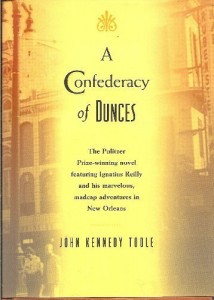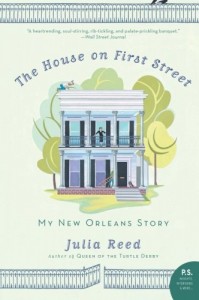Ah, the joy of sitting on the beach soaking up the sun, listening to the surf, enjoying the warm breeze, while reading a good book. For now however, I’ll have to settle for enjoying one in my own garden. In keeping with the theme of Porch Scene: Exploring the Culture of the South, I’ve read a couple of Southern themed novels, and I’m going to revisit an old favorite.
Saving Cee Cee Honeycutt by Beth Hoffman, set largely in Savannah, GA, describes in tender detail the interaction and bonding of exceptional, strong but diverse women, as seen through the eyes of an emotionally damaged twelve year old girl. It also examines mental illness and its painful affects, not only on the individual with the disease, but on those closest to them.
Hoffman has created an eclectic cast of characters, and placed them in the beautiful Southern city in which charm, grace and eccentric behavior fit comfortably together. The book takes a candid look at both the darker side of humanity and the compassionate, caring and nurturing opposite. The delightful little book is crammed with joy, sorrow, intrigue, whimsy and wisdom, and hosts an amazing collection of “steel magnolias.”
The antics of a bizarre menagerie of New Orleans French Quarter misfits are brought to life in John Kennedy Toole’s A Confederacy of Dunces. Protagonist Ignatius J. Riley, a brilliant, dysfunctional, rotund 30 year old living with his mother, is at the forefront of a band of hilarious but tragic characters who bring the underbelly of the “Crescent City” to life with dark delight.
Ignatius, at war with the modern world, records his revolutionary rantings in Big Chief tablets. Lamentably, he is able to put his skill inciting chaos to good use when he is forced to seek employment after his mother demolishes a Volkswagen with her 1946 Plymouth. Armed with his green hunting cap and caustic intellect, he lands first at Levy Pants, where “promptness was sufficient excuse for promotion,” and later in the French Quarter, where he begrudgingly lumbers behind a hot dog cart, charged with selling weenies.
The dark humor has made the book a cult classic and is a glimpse into the magical lunacy that is at the heart of the city. Published posthumously as a result of the relentless persistence of his mother eleven years after Toole took his own life, the book won the 1981 Pulitzer Prize for fiction.
A much more upscale vision of New Orleans is presented by noted author and columnist, Julia Reed in her 2008 The House on First Street. Although not the newest of her novels, this book gives a firsthand account of the events surrounding Hurricane Katrina, and its horrible aftermath, as witnessed by one of the more fortunate survivors.
The book presents the dilemmas facing the elite residents, which while not usually tragic, were non-the-less real and frightening. Although her own home in the historic Garden District was virtually unscathed, (a fact about which she is fully cognizant and grateful) she is able to present the tragedy from several viewpoints, in addition to the one most of us saw in the media as experienced by the less fortunate. And because of her Newsweek credentials, Ms Reed was able to get into restricted areas to witness firsthand the horrors that came to be what is indelibly imprinted in most of our minds; that of our fellow human beings losing everything they had, including in some cases, life.
Ms Reed paints a vivid and insightful picture of the realities of the tragedy. She brings to light the shortcomings of local, state and federal governments, the violence and manmade carnage, the heroes, who were many, and the amazing stamina and determination of the residents who would not give up on the city they loved. Because no description of New Orleans would be complete without some mention of food, and because Julia Reed is a noted “foodie,” there’s much recounted about that as well.
– Deborah Fagan Carpenter






Checking out “The House on First Street” because of this review. Thanks!